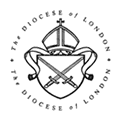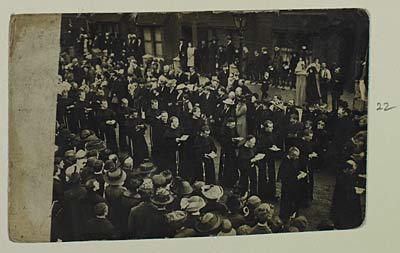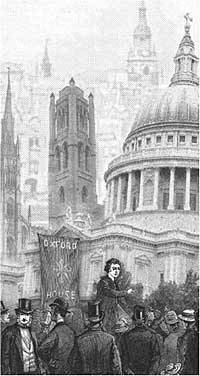Historical themes in the Diocese of London: Faith and Worship
Recapturing what persons in the past actually believed, or how they practised their faith in worship, can be amongst the most difficult tasks confronting the historian of a church or parish! Ultimately, the historian has to accept that evidence and definite conclusions may be elusive. Don't give up without a try, however! If you can discover anything about belief and worship it will bring other historical knowledge about a parish or person alive. And the sheer vitality of London religion in the past two hundred years is perhaps best appreciated when the intensity with which it was practised and expressed is examined.
Faith and Worship: first steps
Look
An obvious place to start is a church building in which a person or congregation worshipped. Medieval historians have long recognised that churches were not just convenient spaces for worship out of the rain, but were often responses to particular understandings of how worship should be conducted. Particularly if dealing with a new-build church from the period you are interested in, many of its design features may offer telling evidence of the kind of worship for which it was intended. We also have pages that will help you find out more information about architecture and fittings. However, beware: church exteriors have often regularly been altered dramatically, and you will need to check through and research whether or not this is the case with the building you are interested in.
Listen
Talking to older members of the congregation can also be a very good place to start. In particular they may be able to alert you to significant changes in the interior or any distinctive ‘reputation' for a style of worship the church had in the near past – these can often endure for long periods. On the other hand, they can also change rapidly, as can congregations. In London in particular you may find it difficult to find people whose memories stretch back very far into the past of an individual church or congregation. A second problem is that many people think of faith as a very personal and indeed private matter, and you may need to proceed very tactfully and thoughtfully in order to gain people's trust. It is also likely that different members of a congregation may have had significantly different views of what the tradition of a church was. Still, knowing what people thought about the style of worship or faith associated with a church can be as important as the reality in many respects.
See here for more information on oral history.
Read
The centrality of religion to Victorian life and ethics, as well as a source of controversy, means that there are plenty of studies which provide some guidance on how to approach faith (and doubt and unbelief!) in the nineteenth century. Although such work is much less advanced for the twentieth century, it is now beginning to appear. See here for some advice on where to begin!
A procession through Plaistow by the Society of the Divine Compassion (Image courtesy of the Trustees of Lambeth Palace Library).
Research
As the above suggest, even if you learn a lot from looking at a building or talking to worshippers to try and confirm your findings through some research. And if you are interested in any period more than forty years ago, this is likely to be your chief means of finding out what you need to know in any case. There are a number of excellent sources available for almost all London churches which can set you on your way. Follow this link to find out more about researching faith and worship.







